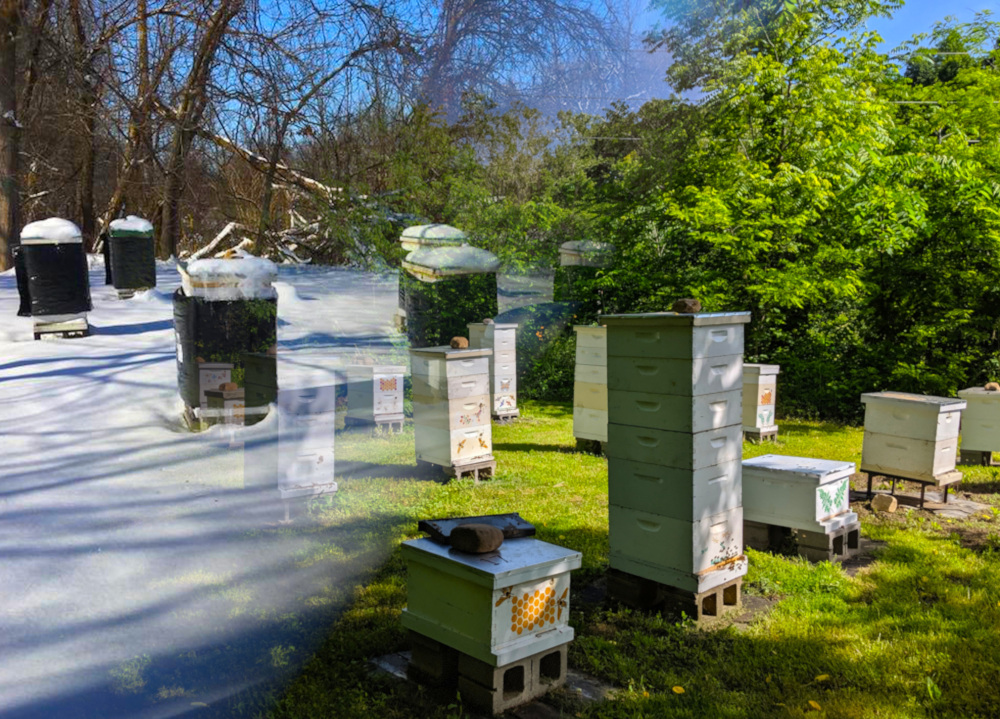
Getting Honey Bees through the Winter
Fall is an important season in the honeybee year. With winter just around the corner, transitioning the apiary from summer to winter is a serious bit of work. Get it right and your bees will likely come thru in great shape. Miss it by a bit and it could be a very different story.
August/September
First there is the big honey harvest decision: how much is too much to take? Leaving enough honey to feed the bees during the winter is obviously very important. We like to harvest honey before August 15 if possible. We leave enough honey and available space (to make more) to help ensure the bees will have two full “deep” boxes and at least one medium honey super full of honey by the onset of winter.
In central-northern Indiana, August is a time bees experience a dearth in available nectar as well as hot dry conditions. So, it’s a time when feeding sugar water (2 parts sugar to 1 part water) can be very important to maintaining healthy bee populations. When the queen sees plenty of nectar coming in and workers building new cells, she continues to lay eggs and increase the population of foragers that will be needed to fill in honey stores during the coming fall nectar flows (i.e., the goldenrod bloom). Bees are pretty smart little creatures!
The timing of the fall mite medication is another critical issue. We use Apivar® brand amitraz medication strips. (Check out the related video on our YouTube channel.) This is a 6-week treatment and may not be used when honey for human consumption is present in the hive. Since the strips need to be placed in the brood boxes, and removed 6 weeks later, it’s important that we get the strips removed before the weather is too cold to reopen and remove the medication. To make all this work, we apply the medication as soon after the last honey harvest as possible.
October/November
If all goes well, we remove the Apivar® mite medication early October. At that same time we feed the bees, and check to make sure the hive is “queen right” (has a laying queen). Depending on the weather, we also typically install plywood bottom inserts to cover the screened bottom boards, we reduce the entrances to the hives to restrict cold winter air flow and we install mouse guards to keep those unwanted guests out!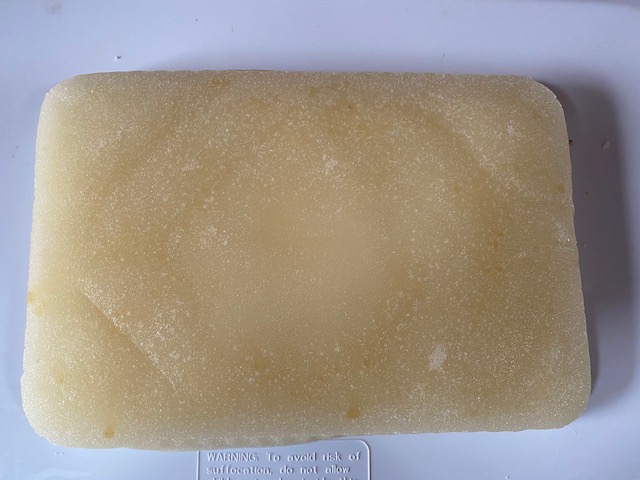
As to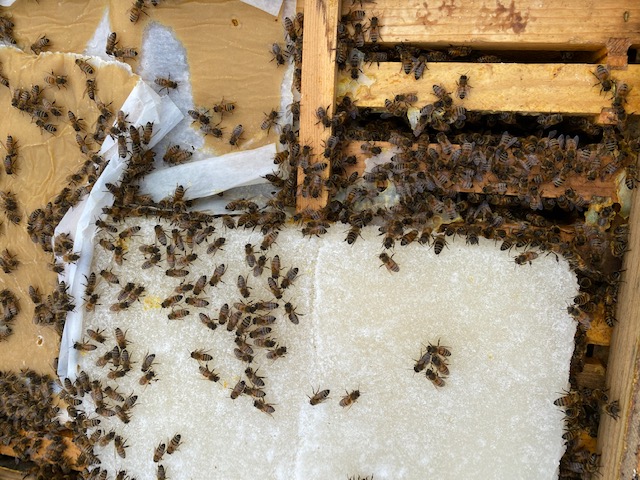 the feeding, we’ve seen several recipes for candy board (sugar board), but we like this one the best. It was provided to us by the folks at Wees Bees near Monticello Indiana. Put 6 1/2 cups of water into a 20 quart stainless steel stock pot and bring to a boil. Then slowly mix in 40 pounds of sugar constantly stirring. Yep - you read that right...40 lbs!!! Bring the mixture to 230°F and blend in about a cup and a half of honey, 1/8 cup honey-bee-healthy (a bee nutrient product) and 1/8 cup apple cider vinegar.
the feeding, we’ve seen several recipes for candy board (sugar board), but we like this one the best. It was provided to us by the folks at Wees Bees near Monticello Indiana. Put 6 1/2 cups of water into a 20 quart stainless steel stock pot and bring to a boil. Then slowly mix in 40 pounds of sugar constantly stirring. Yep - you read that right...40 lbs!!! Bring the mixture to 230°F and blend in about a cup and a half of honey, 1/8 cup honey-bee-healthy (a bee nutrient product) and 1/8 cup apple cider vinegar.
When thoroughly mixed we pour it into molds and let it cool and harden into a hard rock candy form. A batch of this size makes about six candy boards as shown in the picture on the left. This fall we made just over 30 of these and hope they’ll be enough to get us through the winter. As seen on the right, the bees seem to like it...a lot!!!
This year (2020) we’re trying a new “hive gate” that we developed. It serves as both an entrance reducer and mouse guard and makes cleaning the entrances to hives fast and easy. We'll let you know how it works out but the initial installation (pictured here) went well and we're hopeful.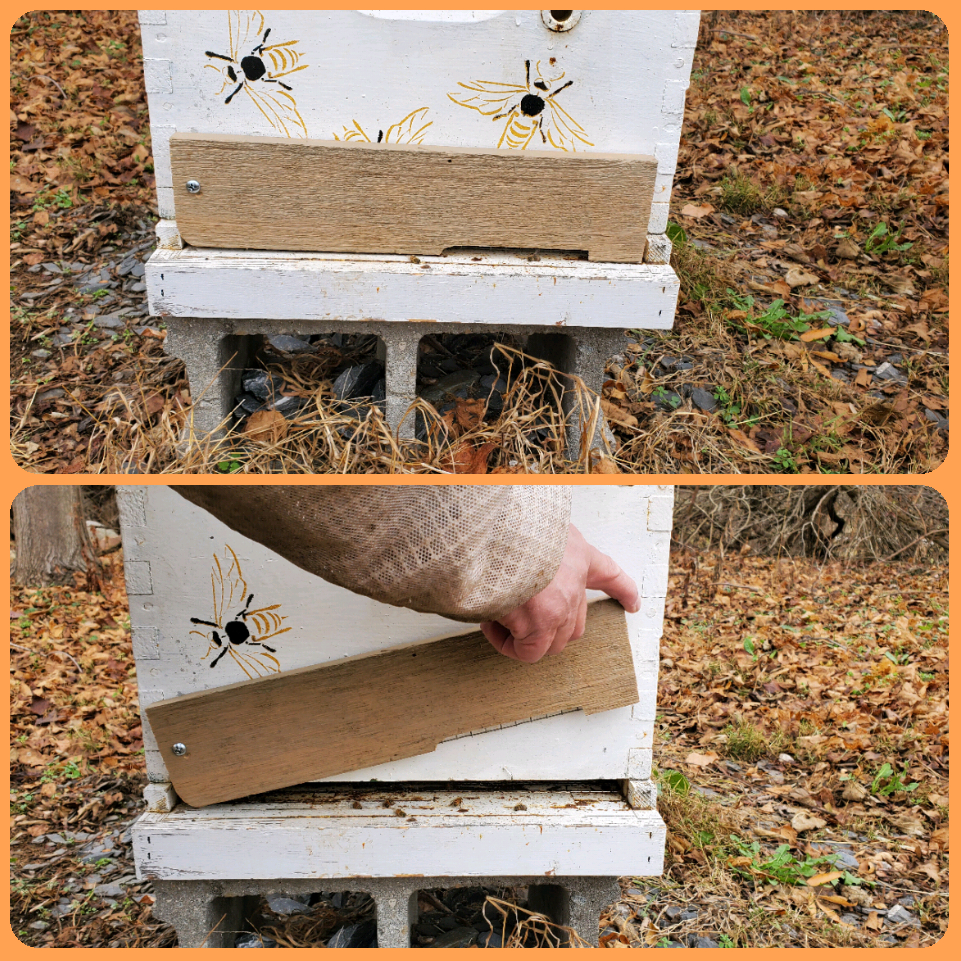
November is when we typically cover the hives with insulation to protect bees from the cold Indiana winter winds and snow. We typically use a black plastic insulated bee cozy that slips neatly over the hive without blocking the entrance.
This year (2020) in addition to our our cozys we're trying a new sheet wrap that is a bit easier to work with and still supposed to be quite effective at keeping the midwest winter at bay.
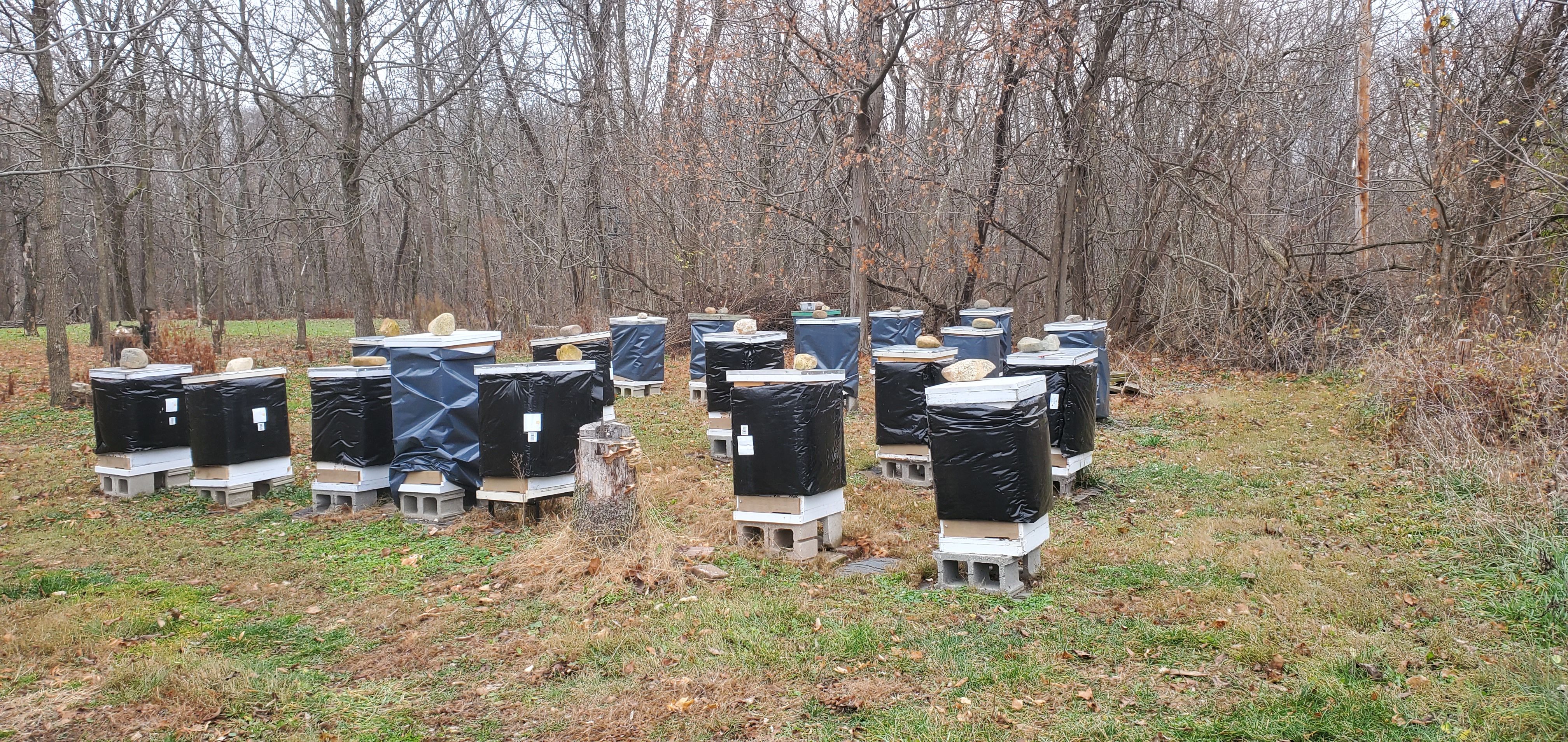 Pictured here is the Springboro Tree Farms apiary all tucked in for the winter weather ahead. Like always we have a number of hives that are looking really strong at this time of the year...and a few that are probably going to struggle...but such is the life of a honeybee colony.
Pictured here is the Springboro Tree Farms apiary all tucked in for the winter weather ahead. Like always we have a number of hives that are looking really strong at this time of the year...and a few that are probably going to struggle...but such is the life of a honeybee colony.
December/January
December and January we pick a couple of those rare 50-60 degree days to clear dead bees from the entrances of the hives and feed the bees if necessary. It’s important that those inevitable casualties of winter are not allowed to block the entrances. If that happens the aspiration of the bees combines with the body heat of the bees to raise the humidity inside…and to be sure, cold damp conditions kills bees.
February we apply spring mite medication and check to make sure the bees have adequate food stores. Typically (depending on the bee population) two Apivar® strips per colony will be enough to ensure our bees emerge from their winter homes mite and virus free.
March/April
In March, six weeks after the Apivar® strips were installed, we remove them and feed the bees. And a soon as the weather warms a bit more in early April we pull the bee cozy insulation off the hives and we remove the screen bottom board inserts and the entrance reducers. At last as spring arrives, we’re ready for the first honey flow…usually the maple and black locust tree blossoms! At this point the bees get busy again…as busy as…well, you know…

